Farming with animals is a centuries-old practice passed down through generations. It is a way of life for many people and how they make their living. However, in recent years there has been an increase in the number of people against farming with animals. They believe it is cruel and that animals should be treated better. This blog post will explore the pros and cons of farming with animals. We will also go through the different methods used and how they can affect the animals.
Farming with animals
What defines animal farming?
Animal farming is a term used to describe the various methods of raising livestock for food. There are many different types of animal farms, each with its own set of characteristics. The most common types of animal farms are dairy farms, beef cattle farms, hog farms, and chicken farms. Dairy farms are operations that focus on producing milk and other dairy products. Dairy cows are the main type of livestock used on these farms.
In case you missed it: How to Care for Your Pigs in the Frost: Cold Management in Pig Farming
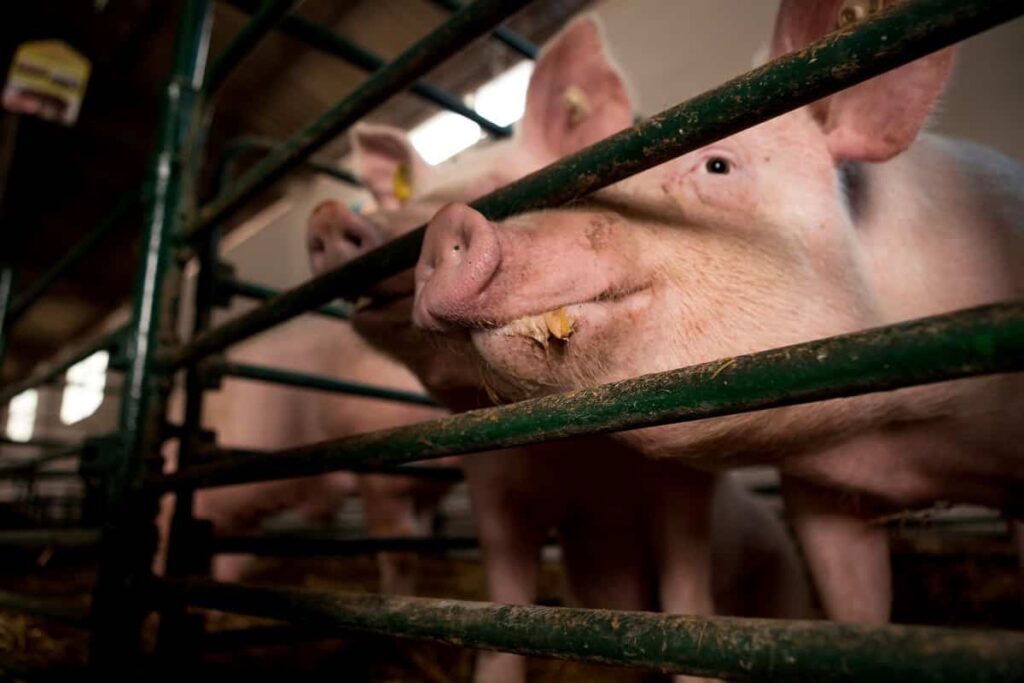
Beef cattle farms are similar to dairy farms but raise beef instead of dairy cows. Hog farms raise pigs for meat production, while chicken farms raise chickens for meat and egg production. There is no one-size-fits-all definition of animal farming. Each farm is unique and has its own set of practices and protocols. However, there are some general principles that all animal farmers adhere to produce safe and healthy food for consumers.
Why is animal farming important?
Animal farming is an important part of the agricultural industry. It allows farmers to produce meat, milk, and eggs for consumption. Animal farming also provides a way for farmers to use animal waste products, such as manure, which can be used as fertilizer. Animal farming is an important source of food for many people around the world. It provides a reliable source of protein and other nutrients essential to human health. Animal farming also supports the livelihoods of millions of people who work in the agricultural industry.
How do you start an animal farm?
If you’re interested in starting an animal farm, there are a few things you should keep in mind. First, decide what type of animals you want to raise. There are many options, from traditional livestock like cows and pigs to more exotic animals like ostriches or alpacas. Once you’ve decided on the types of animals you want to raise, research the best way to care for them. This includes everything from what they eat to how they exercise and socialize. Next, make sure you have the space for your animal farm.
This means having enough land for grazing or housing and access to water and other resources. If you’re unsure where to start, many online resources can help you find the perfect location for your farm. Finally, once you have the land and the animals, it’s time to start building your farm. This includes fencing, constructing shelters, and creating a plan for how your animals will care for each day. It’s important to think about every aspect of running an animal farm before getting started so that you can be prepared for anything that comes your way.
How are animals used in farming?
Animal agriculture is a mainstay of many economies around the globe. It provides livelihoods for farmers and supplies a major food source for people and livestock. But animal agriculture also comes with high environmental costs. The main environmental impacts of animal agriculture are:
Deforestation: Animal agriculture is a leading cause of deforestation, especially in the Amazon. Clearing forests to create pastureland and grow crops to feed animals destroys critical habitats, drives climate change, and contributes to biodiversity loss.
Water pollution: Animal waste, fertilizers, and pesticides used in animal agriculture pollute our waterways. The United Nations estimates that animal agriculture is responsible for 14% of global freshwater pollution.
Climate change: Animal agriculture emits greenhouse gases like carbon dioxide and methane that contribute to climate change. The United Nations estimates that animal agriculture accounts for 18% of human-caused greenhouse gas emissions – more than the entire transportation sector.
Biodiversity loss: Animal agriculture is a major driver of biodiversity loss. Habitat destruction, pollution, and climate change caused by animal agriculture are leading causes of species decline and extinction. The United Nations estimates that as many as 60% of all species could be extinct by 2050 due to the impact of animal agriculture on the environment.
What are the types of animal farming?
Animal husbandry is the branch of agriculture concerned with animal care, breeding, and management. There are many different types of animal farming, each with its own advantages and disadvantages. The most common types of animal farming are:
Dairy farming: Dairy farmers milk cows to produce milk and other dairy products. Dairy farming is demanding and intensive animal husbandry, as cows need to be milked twice daily. However, it can be a very rewarding and profitable enterprise.
In case you missed it: How to Make Cow Dung Manure Compost: A Step-by-Step Guide to Use in Your Farm/Garden
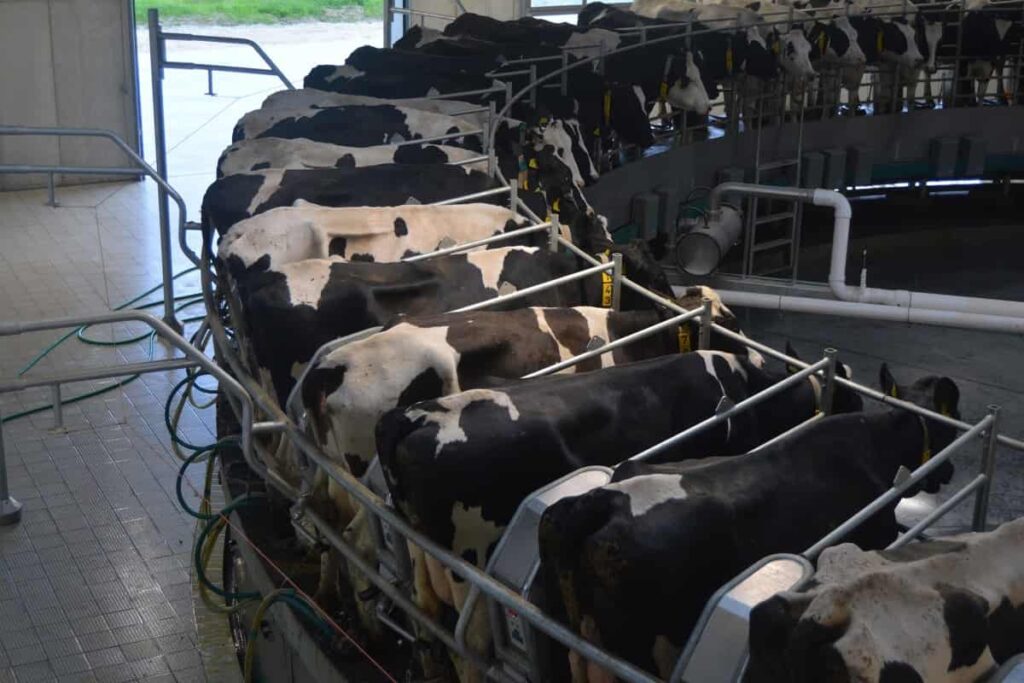
Beef cattle farming: Beef cattle farmers raise cows for meat production. Beef cattle farming is a more relaxed form of animal husbandry than dairy farming, as cows only need to be milked once daily. However, it requires more land and resources than dairy farming.
Poultry farming: Poultry farmers raise chickens for meat or egg production. Poultry farming is relatively easy animal husbandry, as chickens do not require much space or attention. However, it can be difficult to profit from poultry farming due to the high feed cost and competition from larger commercial operations.
In case you missed it: Farming Business Plan PDF: for Poultry, Livestock, Agriculture, Horticulture, Greenhouse, and Hydroponic
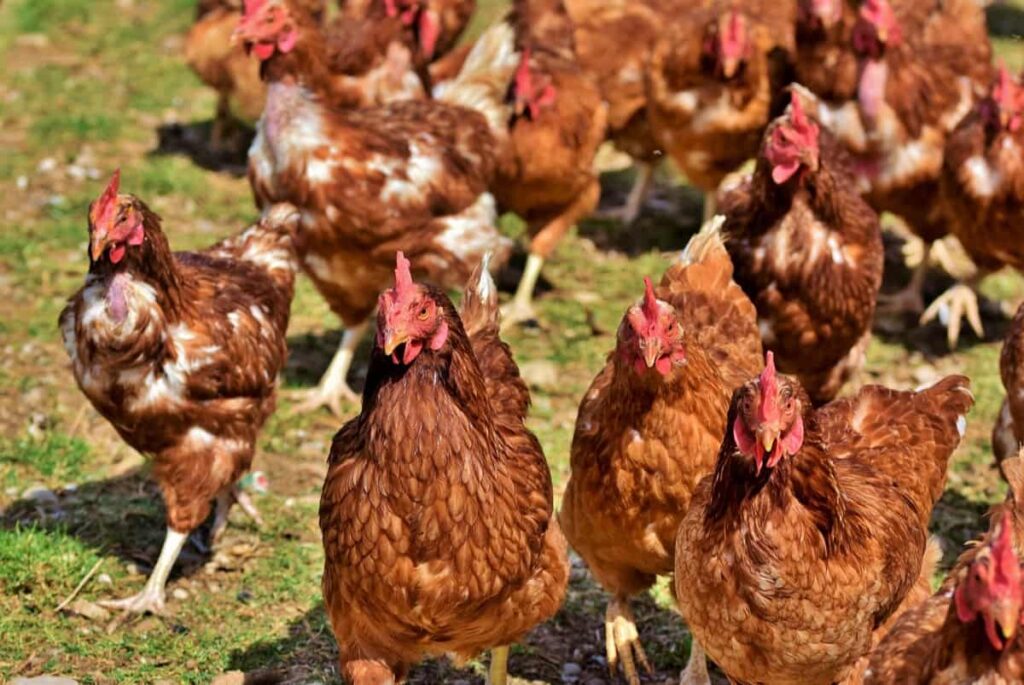
What is the best animal farming?
Though there are many different types of animal farming, some farmers believe that the best type of animal farming involves raising chickens. Chickens are relatively easy to take care of and don’t require a lot of space, making them a good choice for small farms. They also provide a source of income through the sale of eggs.
In case you missed it: Contract Sheep Farming in India: Companies, Agreement, Profits, How it Works and the Pros and Cons
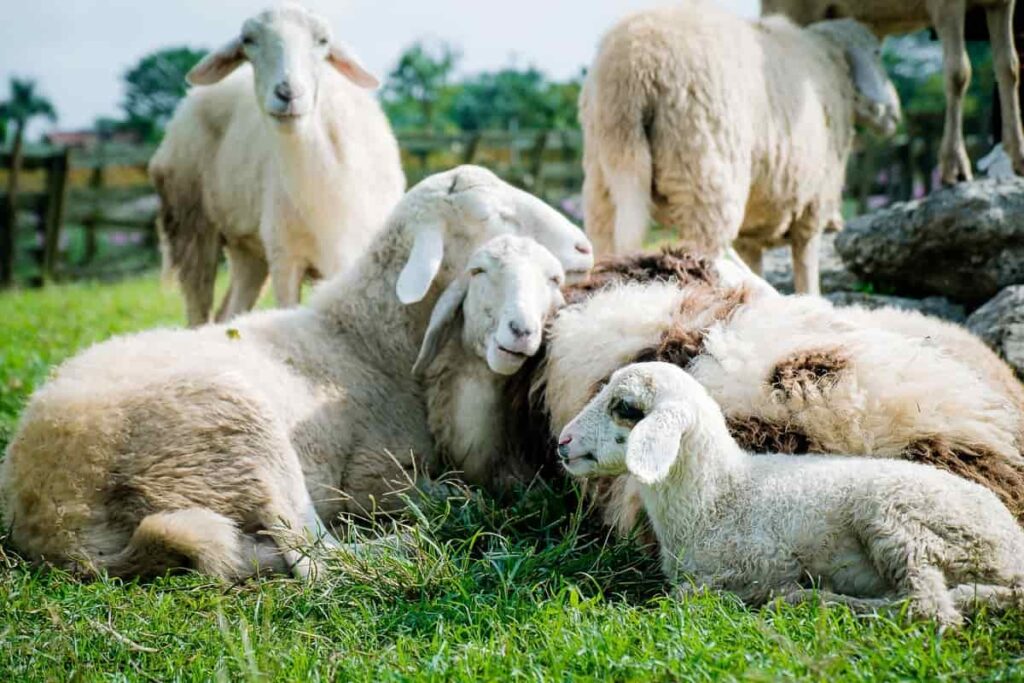
What type of farming is animal farming?
Animal farming is raising animals for food, fiber, or other products. It can be done with pigs, cattle, sheep, goats, horses, poultry, and rabbits. In addition, animal farming includes dairy farming and egg production.
- Pigs are commonly raised for food in the form of pork. However, they are also raised for their skin, which is used to make leather. Pigs are omnivores and eat almost anything, making them easy to raise.
- Cattle are raised for their meat, which is called beef. Cattle are also raised for their skin and horns, which are used to make leather and other products. Dairy cows are kept for their milk production.
Common Dairy Cattle Diseases, Symptoms, and Treatment: Check How this Guide Helps Dairy Farmers
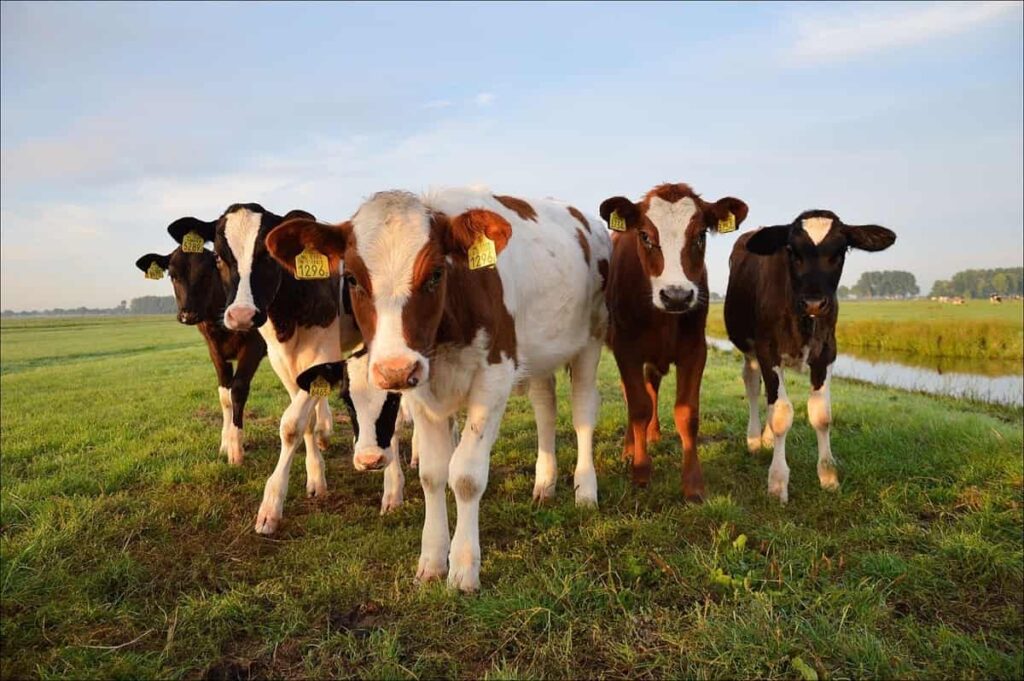
- Sheep are raised for their wool and meat. Sheep meat is called lamb. The wool from sheep is used to make clothing and other textiles.
- Horses are usually not raised for food, but sometimes their meat is eaten as a delicacy. Horses are mostly used for transportation or recreation, such as racing or rodeos.
- Poultry birds such as chickens and turkeys are typically raised for their meat. However, poultry eggs are also a common food product. Chickens are also sometimes kept as pets.
- Goats are raised for their meat and milk. Goat milk is often made into cheese or other dairy products. Goat meat is called kid or chevon.
How to Care for Dairy Goats: Shelter/Housing, Fencing, Feeding, and Disease Control
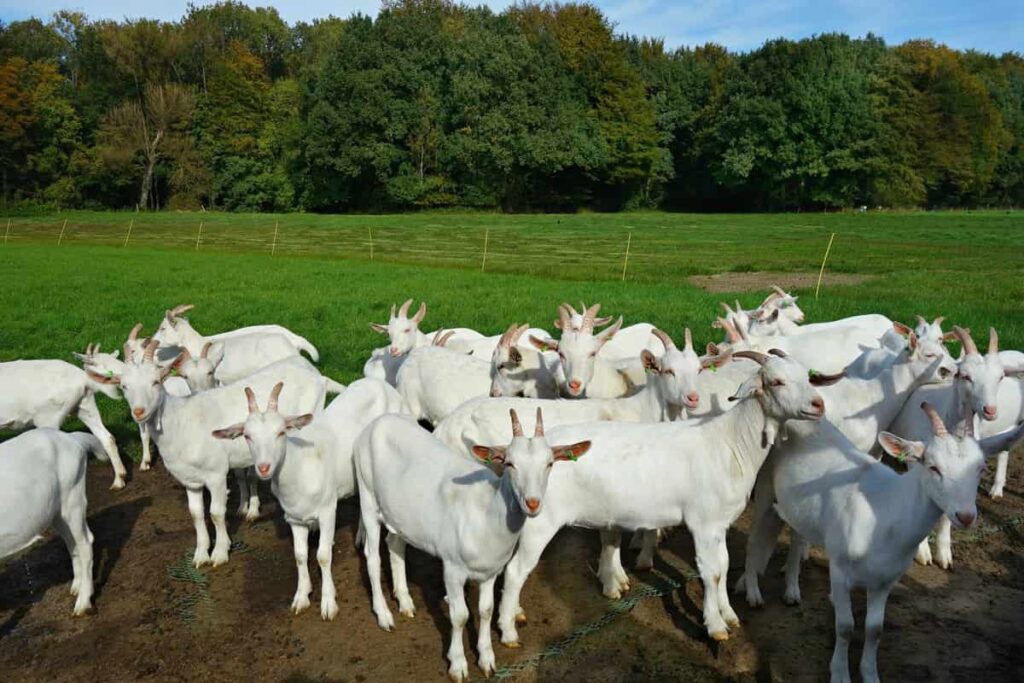
How can you make money with animals?
There are certain ways that you can make money with animals. The most obvious way is to sell the products that they produce, such as milk, eggs, or meat. However, you can also sell other animal-related products, such as wool or leather. If you have a good portion of the land, you could start a breeding program and sell animals to other farmers. Or, you could open a petting zoo or offer riding lessons. The possibilities are endless!
What is the easiest animal to farm?
Farming with animals can be a rewarding experience, but it is important to choose the right animal for your farm. The easiest animal to farm is typically a chicken. Chickens are easy to care for and don’t require a lot of space. They also reproduce quickly so that you can build up your flock in a short amount of time. So chickens are the way to go if you’re looking for an animal that is easy to care for and doesn’t take up a lot of space.
Animal farming business plan
If you’re thinking about starting an animal farming business, one of the first things you’ll need to do is create a business plan. This will help you map out the steps you need for your business to be up and running and set goals and milestones to track your progress. To get started, sit down and answer the following questions:
- What type of animal farming business do you want to start? There are many animal farms, from dairy to chicken and horse farms. So first, decide which farm you want to start, and then research the specific requirements for that type of farm.
- Where will your farm be located? The location of your farm can have a big impact on its success or failure. Make sure to choose a spot conducive to raising animals, with enough space and access to water and other resources.
- Who is your target market? When starting an animal farm, it’s important to consider to who you’ll sell your products or services. For example, will you be targeting local consumers or larger businesses? Knowing your target market will help you determine the types of animals to raise and the prices to charge.
- What are your operating costs? Before making money with animal farming, you need to know the daily cost of keeping your farm running. Make a list of all the necessary costs.
Cost to set up an animal farm
The cost of setting up an animal farm can vary depending on the size and type of farm you want to create. For a small farm with only a few animals, the cost may be less than $1,000. For a larger farm with more animals, the cost could be upwards of $10,000. The biggest factor in setting up an animal farm is the price of land. You will also need to factor in the cost of fencing, shelter, food, and water for your animals.
Profits in animal farming
Animal farming is an efficient and profitable way to produce food. By raising animals for food, farmers can provide a high-quality product at a lower cost than if they were to raise crops. In addition, animal farming requires less land and water than crop production, making it more environmentally sustainable. Animal farming also allows farmers to diversify their operations and produce multiple products from one farm. For example, a dairy farm can sell milk, cheese, butter, and ice cream
A meat farm can sell beef, pork, and chicken and a poultry farm can sell eggs and feathers. This diversity provides farmers with added income stability and makes their businesses more resilient to market fluctuations. Finally, animal farming plays an important role in rural communities. Farm animals provide jobs for thousands of Americans and contribute billions of dollars annually to the economy. Animal farms also generate tax revenue that supports schools, roads, and other public services in rural areas.
What are the benefits of animal production?
Animal production provides several benefits for farmers. Animals can be used for labor, which can help with farm tasks such as plowing fields or harvesting crops. They can also be used for their manure, a natural fertilizer that can improve soil quality. Additionally, animals can be sold for their meat, milk, or other products, providing a source of income for the farmer. Finally, animals can help control farm pests by eating insects or competing with them for food.
Is animal farming sustainable?
Animal farming is not sustainable. Animal agriculture contributes to greenhouse gas emissions, water pollution, and land degradation. Additionally, the animals themselves suffer from overcrowding, confinement, and stress. The impact of animal farming/raising on the environment is well-documented. For example, animal farming generates greenhouse gas emissions that contribute to climate change, including carbon dioxide, methane, and nitrous oxide.
These emissions come from the animals themselves and land clearing for pasture and feed crops. Animal farming also uses large amounts of water for the animals and growing feed crops. This strains local water resources, especially in areas where water is already scarce. In addition, animal waste can pollute waterways with harmful bacteria and nutrients.
The conditions that animals are raised in on factory farms are often crowded and cramped, leading to stress and illness. In addition, animals are routinely given antibiotics to prevent disease, which can lead to antibiotic resistance in both humans and animals. Factory farms also frequently use hormones and other chemicals to promote their animals’ growth, which can negatively affect human health.
Why animal farming is good for the environment?
Animal farming can have a positive impact on the environment in several ways. First, pasture-based animal farming can help to reverse climate change. Grazing animals on grasslands sequester carbon in the soil, which helps to reduce atmospheric greenhouse gas levels. Animal farming can also help to improve water quality.
Manure from grazing animals contains nutrients that can help to improve soil health and water retention, leading to less runoff and erosion. Finally, animal farms can provide a habitat for wildlife. Well-managed pastureland can support a diversity of plant and animal life, including many threatened and endangered species.
9 uses of farm animals
Farm animals are not just for show or producing food. They can be used for a variety of purposes on the farm. Here are ten uses for farm animals:
- Farm animals can be used as draft animals to help with farm work, such as plowing fields or pulling carts.
- Farm animals can be used for their manure, a natural fertilizer that can improve soil health.
- Farm animals can be used to graze on pastureland, which helps keep the grass short and manageable.
- Farm animals can control pests and weeds by eating or trampling them down.
- Farm animals can provide wool, milk, eggs, and meat which can be sold or consumed by the farmer and their family.
- Farm animals can be used in research to help develop new medicines and treatments for diseases.
- Farm animals can serve as companion animals and provide emotional support for the farmer and their family.
- Farm animals can add beauty and interest to the farm landscape and attract visitors near and far.
- Farm animals can teach children about responsibility, hard work, and respect for other living creatures.
9 tips for successful animal farming
- Give your animals the best possible care. This means providing them with a clean and comfortable environment, fresh food and water, and proper medical attention.
- Keep your animals healthy by vaccinating them against common diseases and parasites and practicing good biosecurity measures.
- Know what your animals need regarding nutrition, and provide them with a balanced diet that meets their specific requirements.
- Create a breeding plan for your animals, and be careful to only breed from healthy stock.
- Manage your pastureland properly to ensure it can support the number of animals you are grazing on.
- Be prepared to deal with unexpected events such as disease outbreaks or adverse weather conditions.
- Keep good records of your animals’ health, performance, and production levels so that you can identify any problems early on.
- Use available technology to help you in animal husbandry tasks such as feeding management or identifying individual animals.
- Farming with animals will always involve risks, but you can minimize these risks by being well-prepared and informed. 10 Embrace challenges as part of the farming lifestyle – there will always be ups and downs, but the satisfaction you get from successfully running your farm makes it all worth it in the end.
Conclusion
Farming with animals can be a great way to produce food while protecting the environment. When done correctly, it can help improve soil quality and provide a habitat for wildlife. It can also be a more sustainable option than traditional farming methods. If you’re interested in trying out animal farming, make sure to do your research and work with a reputable farm.
- Crops Grown in Summer Season: Best Choices for Summer Gardening
- Organic Pest Control for Tomato Farming
- How to Maximize Sheep Farming Profit
- Broccoli Varieties: Choosing the Right Cultivars for Your Farm
- How to Raise Pigs in Your Own Backyard: A Comprehensive Guide
- Budget Friendly Sheep Shed Ideas: Cheap and Low-Cost Tips
- How Much Do Cattle Farmers Make: Revenue Streams in Cattle Farming
- Management Pests and Diseases in Your Cotton Field
- Sheep Farming Business Plan for Beginners
- Aquaponic Farming at Home: A Step-By-Step Guide
- Profitable Village Farming Business Ideas in 2024
- High-Yield Aquaculture: Fast-Growing Fish for Farming
- Effective Fish Pond Construction Techniques for Beginners
- Irrigation and Water Management in Pineapple Farming
- Blossom to Harvest: Mastering Flowering and Pollination in Papaya Farming
- Pig Fattening Essentials: From Selection to Sale for Beginners
- Raising Wagyu Cattle: A Complete Guide for Premium Beef Production
- Soil Types and Their Water Holding Capacity
- Optimizing Irrigation Schedules for Coconut Groves for Enhanced Yield
- Espresso Your Garden: Coffee Grounds for Healthier Acid-Loving Plants
- The Best Soil Mix for Snake Plants: How to Mix Your Own Snake Plant Soil
- Green Thumb Success: Expert Tips for Cultivating Greenhouse Beans All Year Round
- Bloom All Year Round: The Ultimate Guide to Indoor Hyacinth Care
- Eco-Friendly Gardening: How to Make Liquid Fertilizer from Kitchen Waste
- Ultimate Guide to Grow Anise in Pots: Explore Seed Propagation to Harvesting
- Guide to Raising Chester White Pigs: Discover Breed Facts to Growth Management
- Mastering the Elegance: The Ultimate Guide to Weeping Cherry Tree Care, Planting, and Maintenance
- Ultimate Guide to Planting Garlic in Grow Bags: Growing Strategies for Beginners
- How to Fix Spider Plant Leaf-Related Problems: Natural and Organic Remedies
- 10 Reasons Why Your Tulsi Plant is Shedding Leaves: Home Remedies and Solutions
- Optimizing Growth and Yield: The Advantages of Palm Bunch Ash Fertilizer
- Utilizing Neem Oil Extract as a Natural Pesticide for Hydrangea
- From Soil to Harvest: Various Ways in Which Farmers Can Use AI Tools
- Steps to Encourage and Induce Citrus Flowers: A Comprehensive Guide
- How to Fix Snake Plant Leaf-Related Issues: Natural and Organic Remedies
- Transform Your Garden into a Fragrant Oasis with Raat Ki Rani (Night Blooming Jasmine)

Wonderful profile and agriculture Concept Note worth supporting